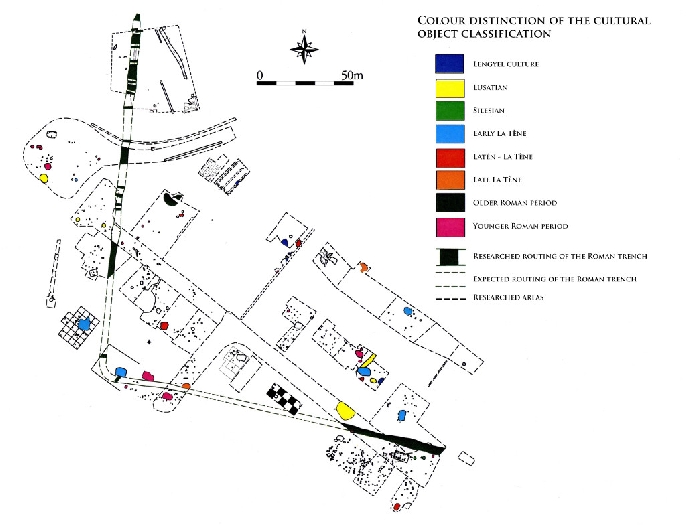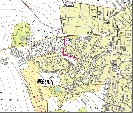Camp in Neředín
In summer 2001 a trench of a short-term camp of the Roman army was discovered in the Římská street during road construction. The Neředín camp represents a proof of the northernmost intervention of the Roman army north of the Danube (about 200 km). It is not known what unit was residing in Olomouc. This place was an important point in the past and probably also crossroads linking north and south of Moravia (perhaps there was one of the branches of the legendary Amber Route). For its strategic position the place was selected as the place of settlement of the Roman army for some time, probably in 179 – 180 AD. There, the army built a temporary fortified camp that was used to control the surrounding area, roads and the ford across the Morava river. The camp was defined by fortification in form of a linear spiky trench with a sharp "V" letter profile. By 2012, researches exposed trench sections of various lengths. To date, we know the southern part (175 m) and western part (120 m) of the camp. The trench width ranged from 3.7 to 4 m and the depth was between 1.2 and 1.7 m.
Findings from the trench filling can be attributed both to Romans and local Germans. The inventory is dominated by pottery fragments, animal bones and metal artefacts.
From scientific analyses we know there were fields and pastures around the camp. The surface of the camp was probably of an open "park" landscape nature with a few trees (birch) and shrubs (hazel). At the bottom of the valley, there was a minor watercourse lined with alders – an important source of water for the troops. Some stream pools with lilies could possibly be present there, too. Fir-beech forests grew in the wider area, pines grew on sandy places and there were oak-hornbeam groves and alders near Moravia. After the Romans left, the place was overgrown by birches and hazels and by nuts and unique butternuts brought by soldiers. Remains of turfs found in the trench filling (in the depth of approximately 0.7 m) revealed they were taken from stream banks. In addition to the lilies, the turfs contained remains of chlorococcal algae, lady's mantle and alder linked to the habitat around the stream.

















